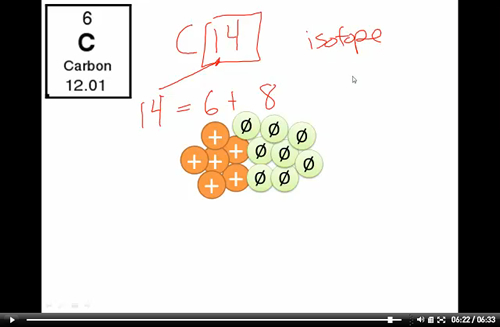Video Tutorial: Isotopes
 Monday, November 1, 2010 at 10:36AM
Monday, November 1, 2010 at 10:36AM
I purchased Camtasia Studio over the summer and have used it to create tutorials for teachers that use our school's gradebook program. I just discovered a feature in the software that allows quizzes to be embedded in a video. I create Power Points all the time that are designed as mini tutorial/review sessions for my students. Camtasia has a plugin for Power Point that allows you to capture screen video and audio. So I decided to do a screencast for my isotope review/tutorial and then embed questions that students can answer to check their understanding. I'm very pleased with the results. I think I might do screencasts in the future for subs to run during an absence. It will be like I'm in the classroom, when I'm not.





